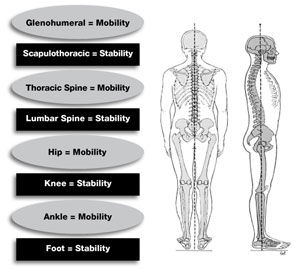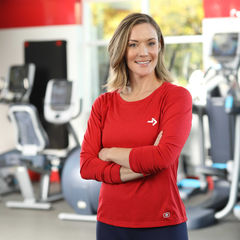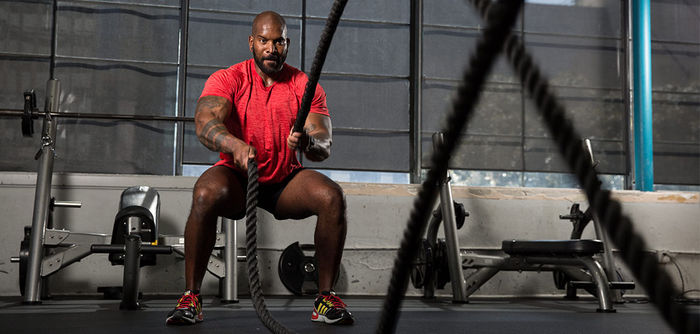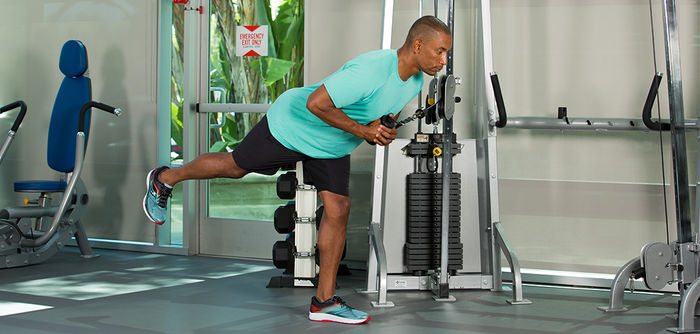As trainers, you can use the ACE Integrated Fitness Training® (ACE IFT®) Model to help your clients improve their upper-body stability and mobility. The ACE IFT Model contains three main components: rapport, cardiorespiratory, and functional movement and resistance training. The functional movement and resistance-training component includes four stages (stability and mobility, functional movement, load training and performance enhancement), and in this article, we will focus on the stability and mobility phase.
First, consider the following pairs of definitions:
- Stability: Characteristics of the body’s joints or posture that represents resistance to change of position
- Mobility: The degree to which an articulation (joint) is allowed to move before being restricted by surrounding tissues
-OR-
- Stability: Synergistic actions of the muscles, ligaments and connective tissue to maintain or control joint position; must never compromise mobility
- Mobility: Synergistic actions of the skeletal (joints) and neuromuscular systems to allow uninhibited range of motion (ROM) around a joint or body segment; must never compromise joint stability
 As you can see from both sets of definitions (adapted from ACE materials), stability and mobility should complement one another and together should help to create a balanced body that is able to move efficiently, while still maintaining joint integrity. To avoid injury, it is important that both stability and mobility are obtained to some degree before moving on to more complex movement patterns, and especially before adding load and intensity to those movements.
As you can see from both sets of definitions (adapted from ACE materials), stability and mobility should complement one another and together should help to create a balanced body that is able to move efficiently, while still maintaining joint integrity. To avoid injury, it is important that both stability and mobility are obtained to some degree before moving on to more complex movement patterns, and especially before adding load and intensity to those movements.
The following exercises can be included as part of a warm-up or the main workout to improve both stability and mobility of the upper body. Novice exercisers using these moves as the main workout should complete two to three sets of eight to 12 repetitions. More advanced exercisers can use these moves as part of a warm-up by completing one to two sets of fewer than 10 reps. These exercises concentrate on improving the mobility of the glenohumeral joint (shoulder) and thoracic spine (mid back), and the stability of the scapulothoracic joint (shoulder blade and rib cage) and the lumbar spine (low back).
Mobility: (glenohumeral joints/thoracic spine)
Kneeling Thoracic Rotation: Begin in a table-top position and place the left hand behind the head. Rotate through the trunk to bring the left elbow toward the right elbow. Rotate back up to bring the left elbow high to the sky, pushing through the right hand for stability and added stretch.
Foam Roller Upper-body Snow Angels: Lie supine on a foam roller, with the roller in line with the spine. Open the arms so the chest is stretched and keep a 90-degree bend in the elbows. Slowly extend the arms overhead, keeping them as close to the ground as possible, moving upward to stretch the anterior shoulder and chest.
Stability: (lumbar spine, scapulothoracic joints)
Bird Dog with Lateral Movement
Scapular Push-ups: Assume a plank position, either on the elbows or hands; keep the trunk stable and move the shoulder blades together as if pinching them behind the back. Push through the chest and anterior deltoids to lift the trunk back up and stretch through the upper back to bring the shoulder blades apart. Be sure to move straight up and down, not forward and back, while maintaining the shoulders over the elbows and/or hands.
 by
by 









